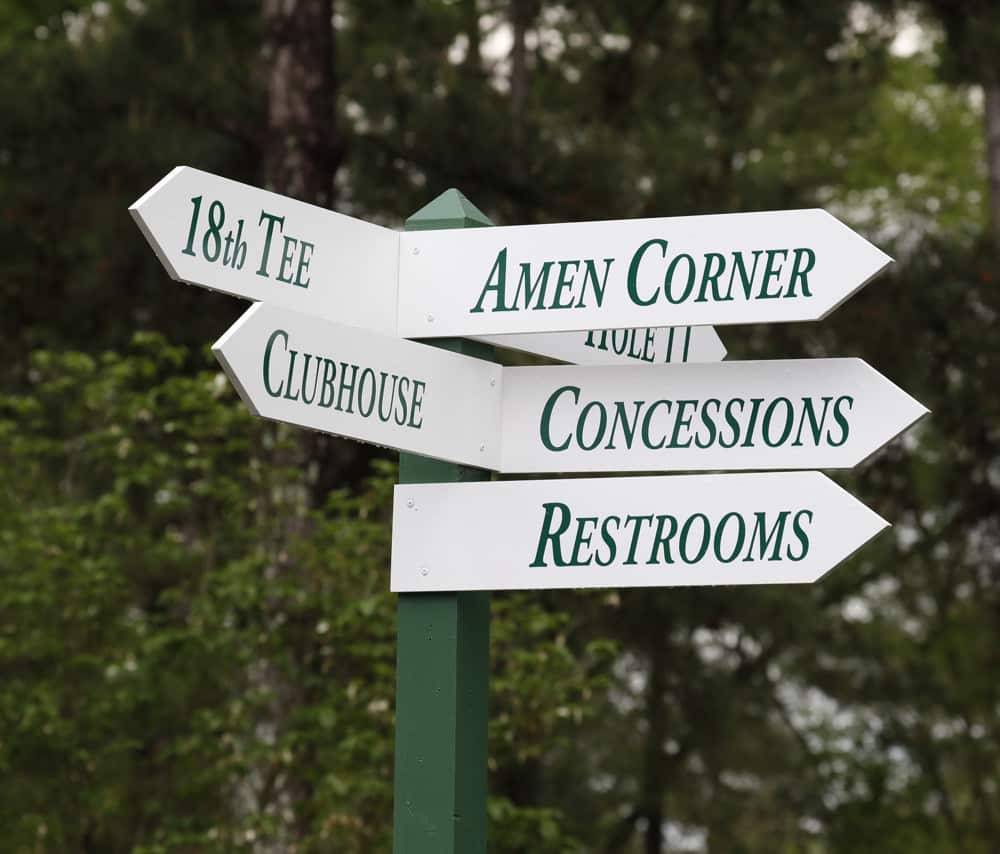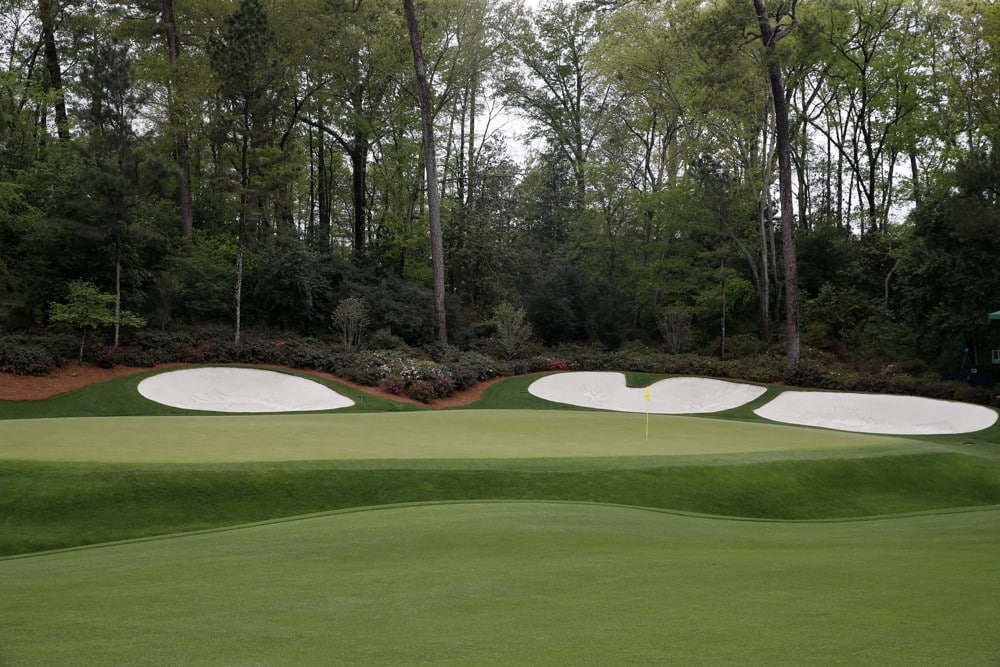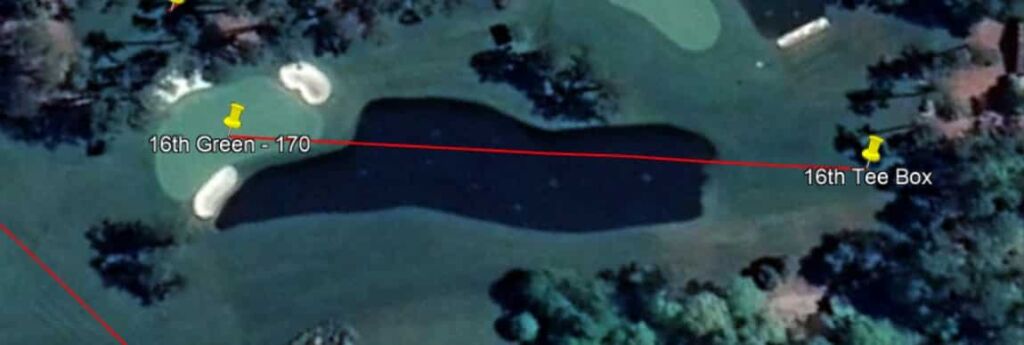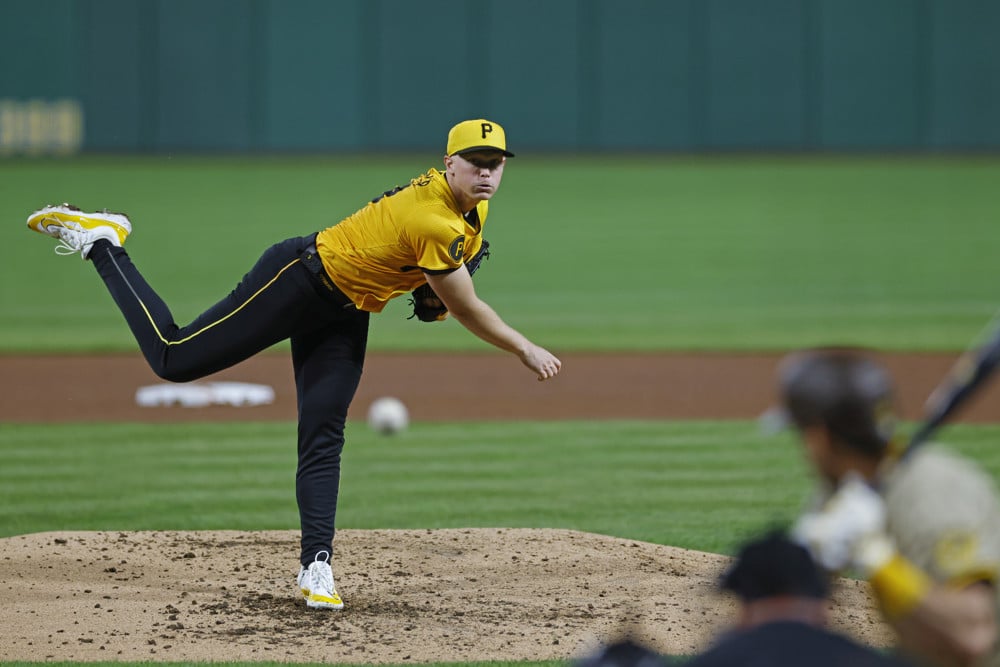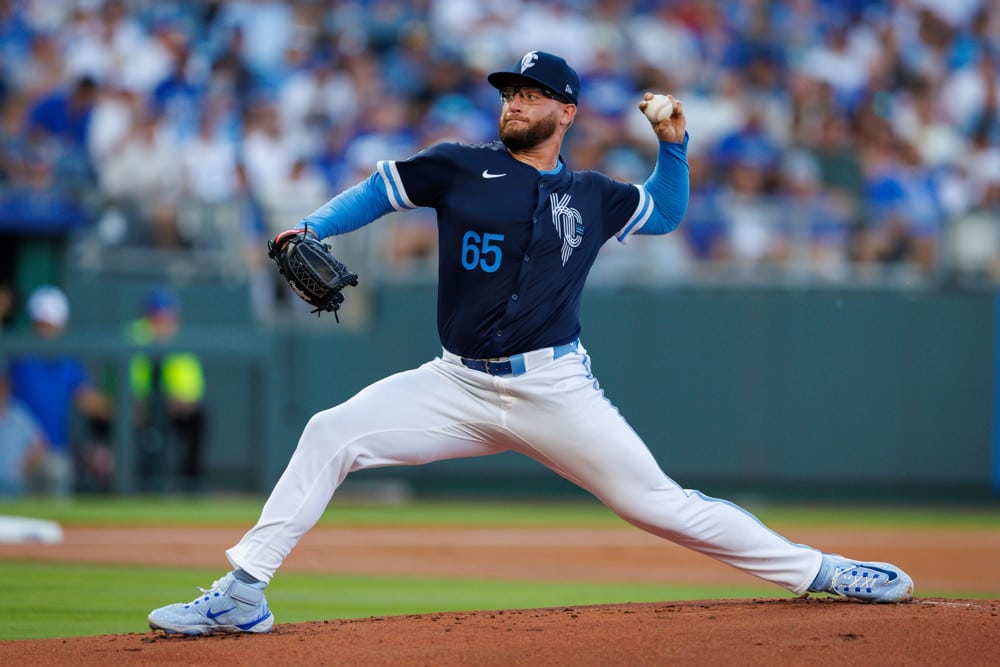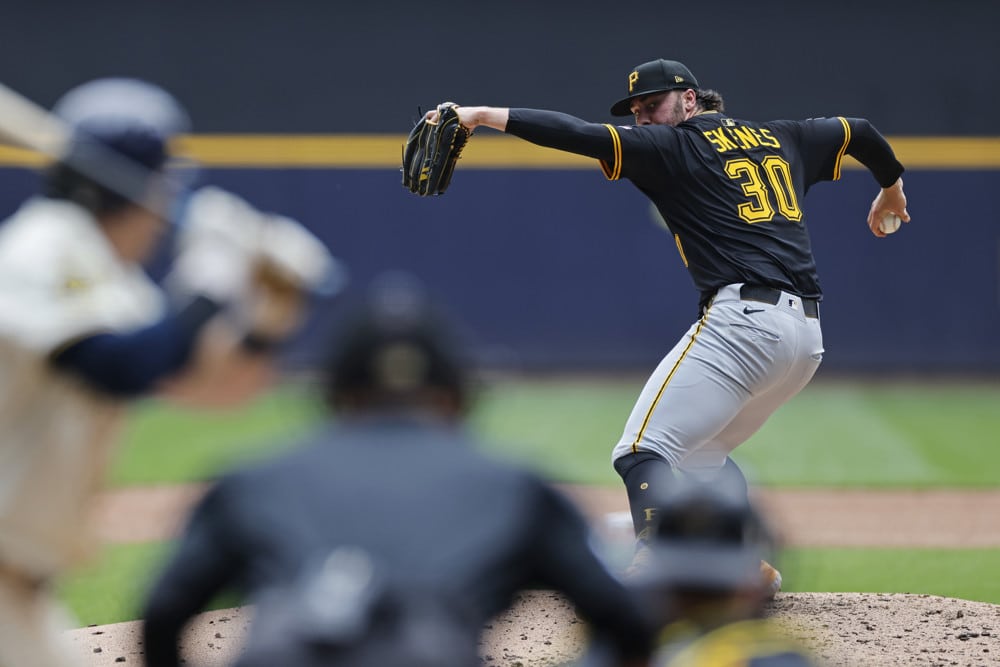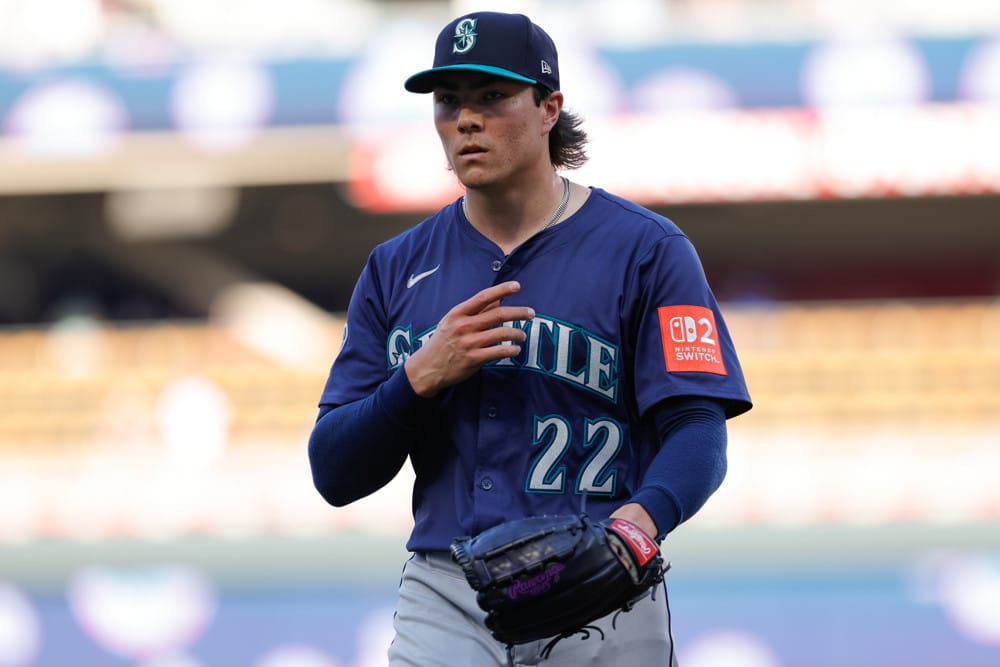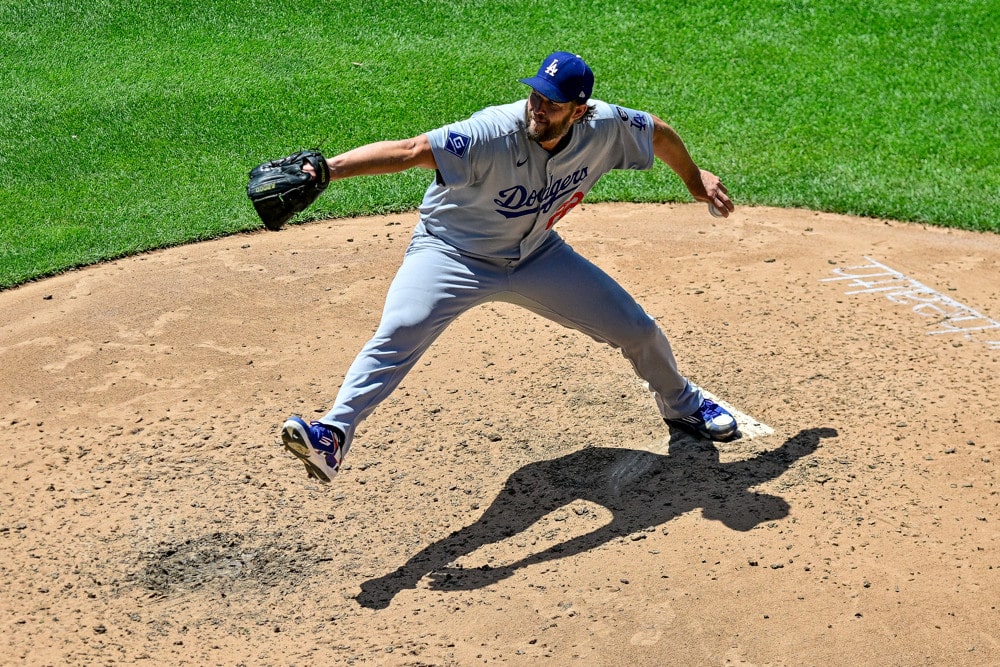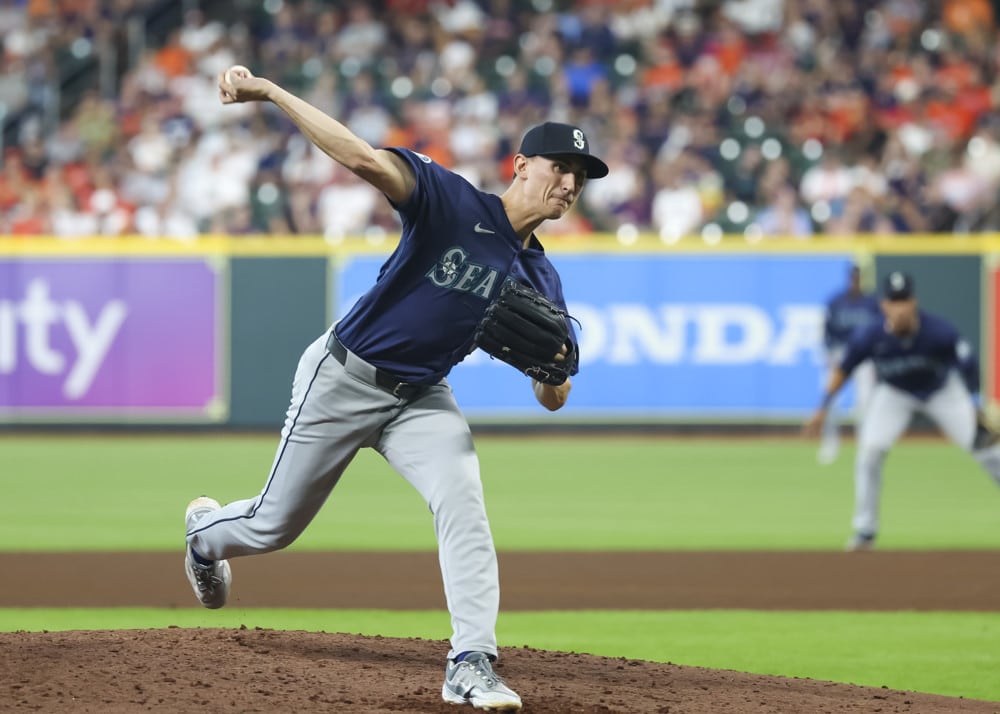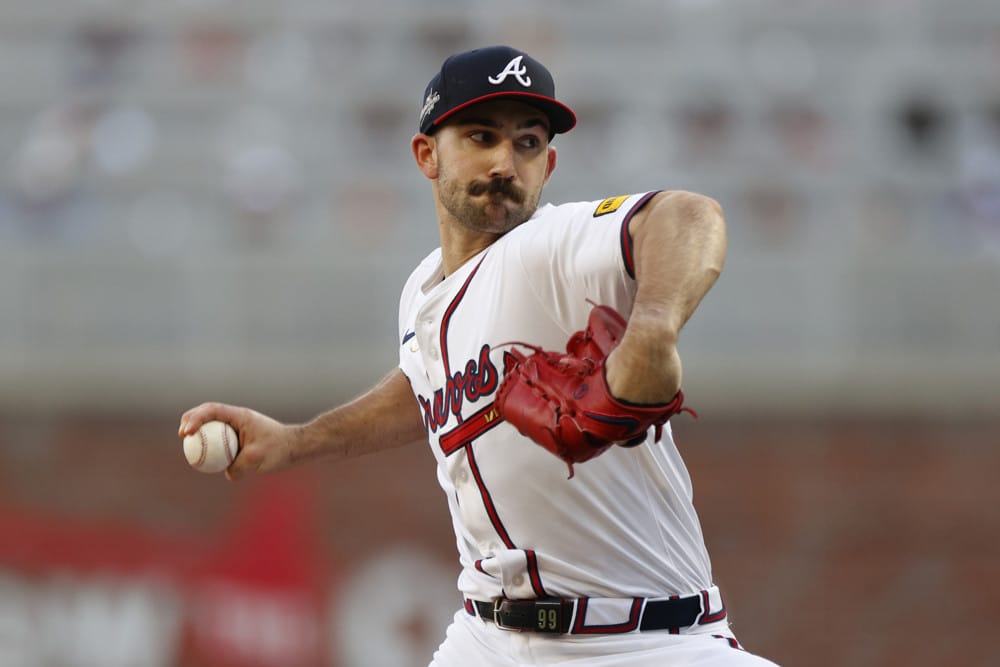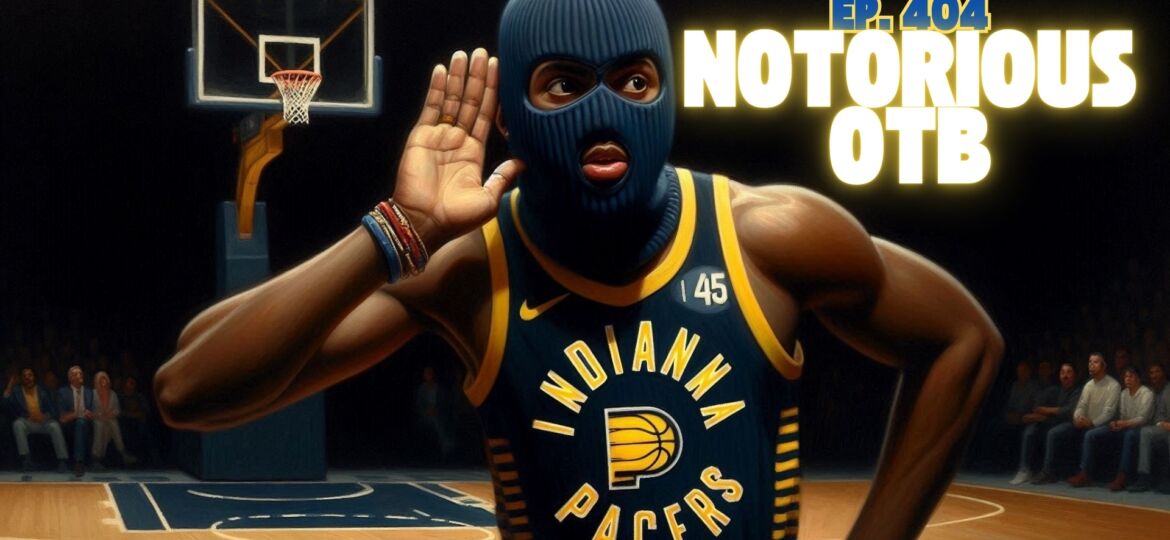There were some very dark times for golf fans in March when it was announced the Masters Golf Tournament 2020 was postponed. While it was hoped Augusta National could reschedule the tournament for later in the year, there was so much uncertainty around how the United States could get a hold of the COVID-19 Pandemic.
But at long last, the Masters Golf Tournament 2020 is here! For the very first time golf fans will get to see Augusta National in all its autumn glory.
Here’s everything to know about the tournament before placing a single wager on it.
The Masters Golf Tournament 2020:
The Field
The biggest names in golf will make their way down Magnolia Lane this week. Bryson. Dustin Johnson. Rory. Tiger. Brooks. There’s no shortage of star power in the field this week.
The composition of the field, however, is a little odd. The field this week was frozen one week before the traditional April date of the Masters. That means there’s some names in the field who probably don’t belong there. There also are some very good players who didn’t make the cut because they didn’t qualify for the April tournament.
Some of those players include:
Daniel Berger: Daniel Berger won the first tournament after the restart and climbed all the way to 13th in the world. He won’t be playing this week because he was outside the Top 50 in the world on March 15, 2020. While his place in the 2021 Masters is secure, it’s disappointing not to see him this week.
Viktor Hovland: Hovland was the low amateur at the 2019 Masters. However he also was not inside the Top 50 in the world on March 15, meaning he isn’t in the field either.
Harris English: Harris English has revitalized his career. He began the year ranked 199th in the world but has steadily climbed inside the Top 40. While we’ll see him at Augusta National next year, he unfortunately will not be playing next week.
Other players currently ranked inside the Top 50 who won’t play next week include Ryan Palmer, Kevin Streelman and Joaquin Niemann. While Niemann qualified for the Masters, a positive COVID test means he will be unable to compete.
For the full field, click here.
The Masters Golf Tournament 2020:
The Golf Course
Augusta National needs no long introduction. Even casual fans know the prominent holes on the golf course, the traditional Sunday pin placements, and why Augusta National is considered one of the finest golf courses in the world.
Augusta National carries significant weight in the golf world in setting both policy and standards. It also is keenly aware of the evolution of golf and how, specifically, technological innovations has changed the game. The club is always looking for ways to tweak the golf course so it can keep up with technological advancements.
The only recent change to the golf course came in 2019. Hole No. 5 – Magnolia, was lengthened to 495 yards after a new tee-box was created across a service road on the property.
The changes made this hard hole even tougher for the Masters tournament 2020. The most optimal angle into the green is from the left side of the fairway. Players taking on the left side must contend with two deep fairway bunkers in their landing zone. Anyone who found themselves in the bunkers last year had no shot to the green.
Many players wanted no part in these bunkers and bailed out right with their tee shot. But this creates a very long approach shot into the one of the toughest greens on the golf course. There’s a large swale guarding the front of the green waiting to repel balls off of it. Players who hit into this green with a long iron have a very tough time keeping it on the putting surface.
Otherwise, the golf course everyone knows and loves remains the same. Here are a few highlights and lowlights of the golf course:
Best Hole Everyone Talks About – Hole No. 13 – Azalea
Almost all golf fans can close their eyes and play this hole tee-to-green from the memory banks. The tee shot is a difficult one, especially for right handers. It requires a draw around the dogleg to catch the slope for a shorter approach. A bolder player may try and cut the corner, but the tee shot must be perfect. Anything less will get knocked into the trees and likely into the tributary of Rae’s Creek.
After successfully executing the tee shot, the players face about a 200 yard approach through swirling winds into a large but firm and tricky green. Any shot short will find itself in the tributary of Rae’s Creek. Anything long will either find the bunker or settle in a collection area. That’ll lead to a nervy bunker or chip down a lightning fast green to the traditional Sunday pin location in the front right portion of the green. Though this hole is reachable in 2 for almost all players, a birdie certainly isn’t assured.
Add to it that the hole is almost entirely secluded from the patrons and is surrounded by a seas of vibrant pink, white and purple azaleas, there isn’t many holes in golf finer than the 13th at Augusta. And what makes the hole truly great is at 510 yards it’s a hole that even us amateurs can walk off the green with a birdie. But to do so, every shot must be executed perfectly. Otherwise, the strokes can pile up in a hurry.
Best Hole No One Talks About – Hole No. 9 – Carolina Cherry
While several holes look strikingly different than the original Alister MacKenzie design, the 9th Hole has remained largely unaltered over time. The hole was a long 420 yard Par 4 back in 1933, and it stands at 460 in 2019. Given how much technology in equipment and golf balls has made golfers significantly longer off the tee, this isn’t a significant lengthening of the hole since the club was opened.
The tee shot is a relatively simple one, as the fairway widens down the chute and runs downhill. But what gives the golfers nightmares is the 9th green, a three-tiered menace that requires perfect precision with an approach shot to make sure the ball is on the proper level of the pin placement.
The approach shot is uphill from the bottom of a gully some 20-30 feet below the putting surface. If the approach shot is woefully short, it’ll run off the false front almost all the way back to their feet. But that doesn’t mean the safe play is to hit over the flag just to be on the dance floor. If you roll the ball from the back of the green to the front, it’ll go down almost 10 feet of slope. If you ever want to see a professional golfer uncomfortable on a putt, watch them try and hit a 10 foot putt above the hole on the 9th, knowing if they misjudge the speed or line they may be chipping back up the green for their next shot.
Worst Hole Everyone Talks About – Hole No. 7 – Pampas
The Par 4 7th is one of the least recognizable holes on the golf course from it’s original design. MacKenzie and Bobby Jones originally designed this hole as a short Par 4 similar to the 18th at St. Andrews. The hole even featured it’s own “Valley of Sin” with a steep false front trickling down to a deep collection area to yield a difficult chip back up to the hole.
The hole was deemed “too easy” by the members, and Horton Smith reduced the size of the green to make it more of a “postage stamp”. Three large bunkers were also added in front of the green to gobble up short approach shots. In 1951, the two back bunkers were added to further punish poor approach shots.
In 2000, Tom Fazio came in and changed the hole further. He added additional trees along the fairways, increased the rough and lengthened the hole to the 450 yards. This once wide open, short Par 4 featuring a false front and a complex three-tiered green was now transformed into a claustrophobic long Par 4 into a small green heavily fortified by bunkers. The hole just doesn’t fit in with the spirit of the rest of the golf course. One of the hallmarks of the golf course is to play the hole strategically with each shot, often times setting up the putt one desired on the green of a Par 4 or 5 with a proper tee shot. There is very little strategy to this hole other than avoiding the pine trees and the bunkers. This hole is regarded as one of the weaker ones on the golf course.
Worst Hole No One Talks About – Hole No. 16 – Redbud
It’s not a bad hole. In fact, it’s a great one. It’s one of the most copied Par 3 templates in golf and one of the most famous Par 3’s in the world. Depending on where the pin is, it’s either a very easy birdie hole or one where a player will struggle to make par if they miss in the wrong spot.
My issue with the hole is the traditional Sunday pin placement. Everybody knows that it’ll be at the bottom the basin on middle-left side of the green. The strategy is to hit a tee shot towards the middle of the green, and then gravity takes over to funnel the ball to the hole. If you miss, its best to miss it at the left greenside bunker. While shortsided, players can blast out past the pin and let the ball funnel back to the hole using that same slope for a tap in par. Players who miss long or right are almost certainly walking away with a bogey.
While it’s great that fans know exactly how this hole plays, it’s become a bit of a carnival act on Sunday. It’s now a surprise if someone DOESN’T either hit a hole in one or come inches close from one. The now almost annual Sunday Hole-In-One on 16 has lost a bit of its excitement because we know its coming.
I would prefer if they moved the traditional Sunday pin to Thursday. It’s a fun pin, and it’s one that can produce an easy birdie for someone to end their round on a high note. A birdie should be hard earned here on Sunday. There’s enough scoring holes on Sunday to provide for drama. I’d much rather see a tougher pin placement to add another tough test down the back nine.
The Masters Golf Tournament 2020:
Betting Strategies
The U.S. Open claims as the toughest test in golf, but to win the Masters almost every facet of a golfer’s game must be on point. A golfer must drive the ball with the perfect blend of both length and accuracy. A golfer must possess both distance control and accuracy on their approach shots. It is uncomfortable for a golfer to chip off the tight lies around the greens, and with how fast and sloping the greens are they’ll have to be both vigilant and creative to get the ball close to the hole. And then the greens are lightening quick and do not offer many opportunities to hit a straight putt. That will make it difficult for even the greatest of putters in the world on greens where experience matters.
That’s part of the reason why there’s been a wide array of golfers who have put on the Green Jacket in recent years. Golfers like Jordan Spieth, Sergio Garcia and Danny Willett were premier ball-strikers with their irons to continually set themselves up for good scoring opportunities. Bubba Watson has won at Augusta twice by bringing the golf course to it’s knees off the tee and with his creative shot trajectories. Golfers like Phil Mickelson, Zach Johnson and Patrick Reed are wonderful with their short game and can get molten hot with the flat stick. And Tiger Woods, well, he was good at everything.
If there was one particular attribute in a golfer’s game that is the most important, it would be with their iron play. A golfer doesn’t have to hit every fairway to remain in contention. The shaved down rough makes it easier to make clean contact, and as long as they find themselves on the correct side off the fairway they still can fire at the pin with a good angle to the green. Therefore, proper distance control and accuracy with the irons are paramount to set up good scoring opportunities. Additionally, those who score well on the Par 5’s stand a great chance to contend on Sunday, especially when the golf course plays tough and birdies are scarce.
Distance off the tee is also typically a big advantage at Augusta National, especially since the golf course has been Tiger proofed. The greens have such complexity to their contours that hitting into them with a longer iron or hybrid makes hitting the right
Regardless, the best metric to handicap the tournament before Thursday is SG – Tee-to-Green. Seven of the last 8 winners of the Masters entered the tournament in the Top 10 in SG – Tee to Green. They’re the following players:
- 2012: Bubba Watson – 1st
- 2013: Adam Scott – 1st
- 2014: Bubba Watson – 4th
- 2015: Jordan Spieth – 4th
- 2016: Danny Willett – 7th (didn’t qualify officially, but would have ranked 7th based on accumulated stats that year)
- 2017: Sergio Garcia – 3rd
- 2019: Tiger Woods
The lone exception was 2018 winner Patrick Reed. He entered the tournament ranked 24th.
The other important consideration a bettor must make is the weather. That will impact both how the golf course will play and what types of golfers will fare well. In cold, blustery conditions with low humidity, the golf course plays very European-like where consistency and accuracy are much more important than length. But when it plays in hot, low wind and humid conditions, then The Masters Golf Tournament 2020 provide for plenty of birdies around the golf course and allows someone to overpower it.
Much talk has been made about the differences in the weather at Augusta National in November. The two primary differences are air temperatures and the wind direction. In the fall, temperatures can get quite chilly in the area. Cold air makes the 7,452 yard Augusta National play a lot longer and colder. Colder temperatures not only drive up scores, but it tends to level the playing field and bring in more types of golfers capable of winning. That seems counterintuitive considering any time a golf course is lengthened it usually prices out shorter hitters. But the cold temperatures make it difficult to hit greens in regulation for everyone, bombers or short hitters. When that’s the case, scrambling and putting become much more vital, which is something the tacticians do a little better than the bombers do.
The second change is the prevailing winds. Anytime the golf course gets double digit wind speeds increases the difficulty, but the direction the wind comes from can affect scoring too. Typically in the spring the prevailing wind comes from the south and the east. This wind direction is typically the easiest wind direction that the players face. This makes almost all the Par 5’s reachable in 2 for everyone, and makes the tough 18th play downwind. In the fall, however, the prevailing winds are more from the north and the west. These are tougher wind conditions for the players. While the winds will help players on the tough 5th, 10th and 11th, it hurts them on many scoring holes on the golf course. Scoring averages are typically much higher when the wind comes from the north and west.
Lastly, any moisture in the golf course is a benefit to the players. While the golf course has sub-air systems to suck out the moisture, any residual moisture on the putting surfaces help keep the ball on the green and provide for easier scoring conditions.
Here’s the weather forecast this week at The Masters Tournament 2020 (per Accuweather):
- Pre-Tournament: Slight chance of showers in the days leading into the tournament. The golf course also received some rain last week thanks to some tropical weather conditions. The fairways should be pretty soft heading into the event.
- Thursday: Cloudy and humid. Chance of a late afternoon thunderstorm. Wind SSW 5-7 MPH. High 80
- Friday: Mostly cloudy with showers. Humid, Winds NNE 6-10 MPH. High 78
- Saturday: Cloudy with a couple showers. Winds ENE 8-13 MPH. High 73
- Sunday: Clouds and sunshine, chance of a thunderstorm late in the day. Winds SW 10-20 MPH. High 78
The first two days sets up as perfect, ideal scoring conditions. The winds don’t look severe while the temperatures are warm and the golf course will get some moisture. The combination of the cloud cover and the humidity also will keep some moisture in the greens. This should allow the greens to be more receptive. Birdies will be plentiful and the cut should be around +1 or +2.
Saturday and Sunday brings a little more wind to the golf course, but it’s from a more favorable direction for the players. The golf course once again should see some more moisture in it, meaning the greens should remain receptive through the weekend. The winning score should be in the low to mid-teens under par for the week.
This weather forecast is setting up to favor a longer hitter. While temperatures will remain warm the amount of moisture in the golf course should slow down the fairways. Players who have longer carry distances to hit higher lofted irons into the greens have an advantage. While a shorter hitter certainly can win, they’ll have to be on point with their longer clubs into smaller targets onto the greens. That makes their task a much taller order.
It also create a very bunched up leaderboard. Typically in colder, cooler Masters a handful of guys separate themselves because the golf course plays more difficult. In warmer temperatures, damp conditions and light winds there are plenty of opportunities to score. The Masters Golf Tournament 2020 shaping up to be a very compelling and exciting Sunday at Augusta.
READ ALSO


